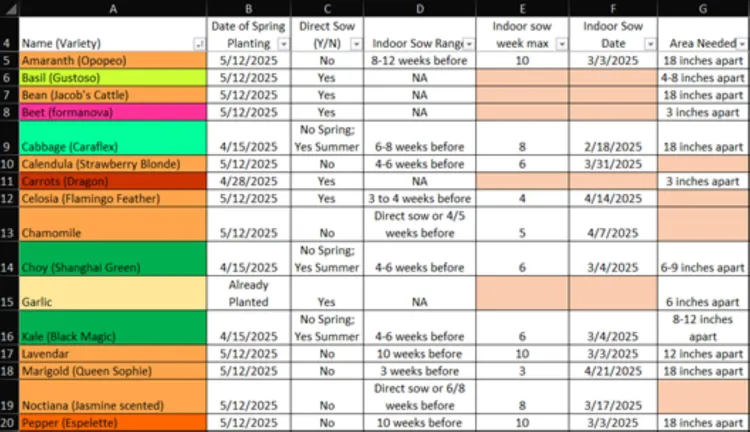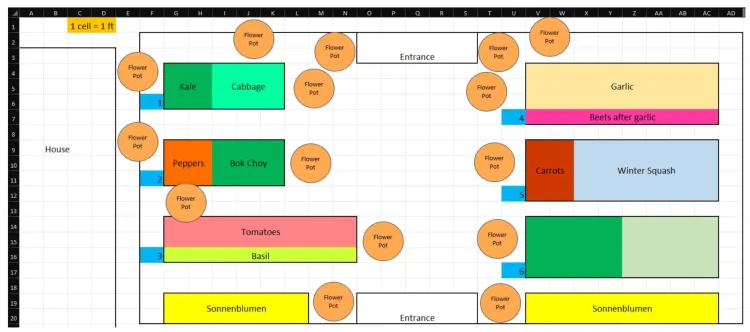Early spring is an exciting and busy time for Vermont gardeners. Many prefer the thrill of choosing from a vast variety of seeds rather than settling for the offerings available at local nurseries.
San Marzano tomatoes, Strawberry Blonde calendula, Dragon carrots—check, check and check! However, as your gardening experience (read: obsession) grows, so will the list of seeds you may buy. My grow list includes 27 varieties this year!
For any variety, there are vital details to track. First and foremost, should the seeds be started indoors or directly sown? If indoors, how many weeks before the average last frost date? Do the seeds need darkness or light to germinate?
You'll also want to account for the space each plant needs in a garden bed and the days until maturity for successional planting. That’s a lot to keep track of, especially as you get into dozens of varieties.
Here is a simple yet effective way to manage all this information. It may not be quick and completely effortless process, but the effort you put in now will be reaped throughout the growing season and in future years.
I track my garden using two main tools: 1) a spreadsheet with all my plant varieties and key information and 2) a grid-layout map representing all my garden beds and pots.

Starting with the plant variety list, I include important details like the indoor sowing date and the spring planting date. I color-code the spreadsheet and use functions to automatically calculate the indoor sowing dates based on the average last frost date in my area, subtracting the maximum number of weeks each variety should be started beforehand.
With this setup, I can simply check this ready-made list of what to plant each week. The spreadsheet can be further customized by adding columns for any additional details you find helpful, such as plant spacing requirements.
Now onto the garden map. My garden layout consists of eight rectangular beds and several flowerpots. Each cell represents one square foot.

Within each bed, I specify what will be planted there. I color code the cells to correspond with the varieties listed in my plant variety list. If I am not sure what I will plant, I leave it blank, meaning I still need to decide what to plant there later.
While you don’t have to be this detailed, I find that planning down to the square foot helps. This map ensures I know exactly where each seedling will be transplanted.
There are many ways you can create these resources for your own garden. The simplest method is using graph paper and a pencil.
For those interested in technology-based resources, there are downloadable gardening apps (though many require a paid subscription). Personally, I prefer computer-based spreadsheets.
They allow for easy edits and adjustments, and you can quickly replicate your work for future seasons. If, like me, you have favorite varieties you plant every year, your plan may change minimally, but all the information will be right at your fingertips for next year.
Good luck with your 2025 gardening season! I hope these tools help simplify your planning and make the process more enjoyable.
